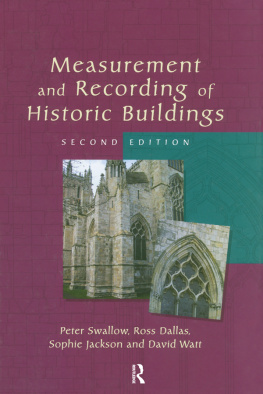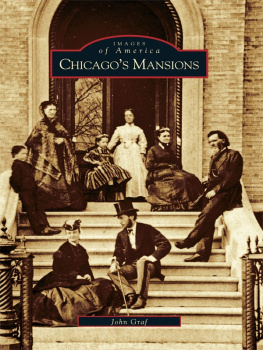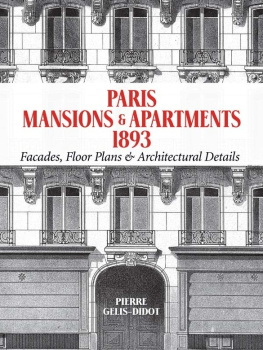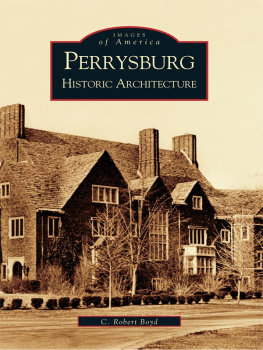PENN'S COTTAGE
AFTERWARD CALLED "THE LETITIA HOUSE."
Be sure to settle the figure of the town so as that the streets s hereafter may be uniform down to the water from the country bounds," wrote Wm. Penn, the proprietor and governor of Pennsylvania, on 30th of September 1681, to his trusty and loving friends, Wm. Crispin, John Bezar, and Nathaniel Allen, who were his commissioners "for the settling of the present colony this year transported into the said province." "Let the place for the storehouse be on the middle of the key, which will serve for market and storehouses too. This may be ordered when I come, only let the houses built be in a line, or upon a line, as much as may be."
"Pitch upon the very middle of the plat, where the town or line of houses is to be laid or run, facing the harbor in the great river, for the situation of my house;.... the distance of each house from the creek or harbor should be in my judgment a measured quarter of a mile; at least two hundred paces, because of building hereafter streets downwards to the harbor."
"Let every house be placed, if the person pleases, in the middle of its plat as to the breadthway of it, so that there may be ground on each side for garden or orchards or fields, that it may be a green country town which will never be burnt and always be wholesome." Such was the idea of the founder in regard to the characteristics of the capital of his new settlement. His hope was that Philadelphia would prove to be a quiet, shaded, green country town, after the pattern of many English places and villages, "far from the madding crowd's ignoble strife," and free from the excitements, animosities, frivolities, and vices of a metropolis. He could not anticipate the eventful future. His great town was to be situate within an English colony, governed by English policy, influenced by English habits, protected by English authority, but scarcely daring to hope for fostering care and helping assistance from the English government. Wisdom in laying out the plan of the city has been often claimed for the scheme of Penn, and posterity has not denied the proper acknowledgment. According to his own expectationthe anticipation of the great events of the future being beyond moral kenhis plans were philosophical and practical.
He could not foresee the strong influences which would result from the sturdy spirit of freedom which was diffused among the English people during the times of the Commonwealth; nor could he anticipate that within a century the principles of government for which his countrymen, Hampden and Sydney, contended, would be the controlling philosophy in the American Colonies, and that his own town of Philadelphia would be the place at which a government representing the purified theories of the English constitution would be most effectively enforced. A "green country town," sweet and wholesome, was all that he could hope for; and as for his own residence, his desire was that it should be simple, pleasantly situate, so as to overlook the broad river, and placed in the middle of its plat, with gardens and orchards surrounding it.
The commissioners selected for the Governor's lot a piece of ground which at the time was in the most conspicuous portion of the town.
The Front street from the Delaware was its eastern boundary, the High street was upon the north, the Second street upon the west. It was not the desire of the founder that the house should be large and costly. His great ambition was that his principal seat should be up the river at Pennsbury: a house in the city was necessary when he should come down to meet the assembly, to attend Friends' meeting, or to dispatch business. His barge or his yacht would bring him in proper state and show, and take him away again. For, although the proprietary had adopted the simple habits and doctrines of the Society of Friends, there was within him much of the manner of his father's house. Formality and a certain degree of luxury, with attention to many worldly fashions, which were to the strictest Quaker vanities of vanities, were kept up. In truth, all that we know of the early Quakers must satisfy us that the severe simplicity which is supposed to have been characteristic of the Children of Light was the rule among the poor members rather than among those who were possessed of means. Penn himself was particular in regard to his beaver hats and his periwigs. His shoes were not allowed to disdain the meretricious pride of buckles. He resorted to leather overalls for riding or shooting. His wife and daughter on his second visit, when he resided at the Slate-Roof House, held their consultations with haberdashers and mantuamakers in relation to the style of their caps and frocks. They wore buckles. Letitia rejoiced in a watch, and goldsmiths' bills, which must have been for chains or other jewelry, were paid by the great Quaker. The cellar of the governor was stored with beer, cider, sherry, madeira and claret wines. Of strong liquors, rum and brandy, he had little, and preferred them not for ordinary drinking, because, according to his own sentiment, they were "better for physic than food, for cordials than for common use."
The proprietary's lot extended from High street, southward on Front and Second streets, halfway to Chestnut street. It was in length, east and west, 402 feet, and in depth 172 feet. Almost literally was the request that the house be placed in the middle of the plat complied with. The building was a little west of the center of the enclosure, and at nearly equal distances between the upper and lower boundaries. It must have been commenced before Penn's arrival.
Gabriel Thomas, in his account of Pennsylvania, published in London in 1698, said: " I saw the first cellar when it was digging for the use of the house of our gouvernour, William Penn." Gabriel says that he himself came to Pennsylvania in the first ship, the John and Sarah, of London, Henry Smith commander, in 1681. This vessel probably arrived in November. Penn came in the Welcome, which arrived at the Capes of the Delaware on the 24th of October 1682, nearly a year after Thomas was in the colony. It might seem from this statement that Penn's house was the first one erected in the city, but in regard to that matter there is only conjecture. Thomas says it had the first cellar which was dug for a house. It is claimed that the first house was built in 1682 by Andrew Griscom, but this seems to be a matter of tradition only. In regard to the materials of Penn's house, it is stated by Watson that some of the finer fittings of the interior were imported in the first vessel, but most of the work, it may be presumed, was done in Pennsylvania. Concerning the bricks which form the walls, it is proper to allude to the prevalence of stories which frequently assume, in the case of old buildings, " the bricks were brought from England." No doubt there have been such houses in America, but the probability is that the greater number of mansions to which such distinction has been assigned were constructed entirely of brick manufactured in this country. In regard to Penn's house, it is sufficient to say that if he sent out bricks from England to build it, such care was not necessary. He could have bought at his own door all the bricks required. There was a brickmaker in the neighborhood, before the city was laid out, in the person of Daniel Pegg. Pegg succeeded Jurian Hartzfelder, who obtained from the court at Upland, in the time of the Swedes, a grant of the ground between the Cohoquinoque, afterward called Pegg's Run in remembrance of Daniel himself, and the Cohocksink Creek, embracing in his estate almost entirely the district afterward known as the Northern Liberties. The soil furnished the best material for bricks, and the presence of brickmakers was spoken of at a very early period. Penn, in a letter dated July 1683, says, "I have here the canoe of one tree y' fetches four tunns of bricks;" which shows that bricks were a common article of transport, some of them being probably brought from Burlington in West Jersey, an older place than Philadelphia. Some might have come from Chester or Newcastle. In A Further Account of Pennsylvania, published in 1685, Penn said, "Divers brickeries going on, many cellars already stoned or bricked, and some brick houses going up." In this paper he publishes a letter from Robert Turner at Philadelphia, which is dated 3d of 6th month, 1685, in which the latter gives an account of the improvement in the country after Penn's departure. Turner says: "And since I built my brick house, the foundation of which was laid at thy going, which I did design after a good manner to encourage others, and that from building with wood it being the first, many take example, and some that built wooden houses are sorry for it. Brick building is said to be as cheap; bricks are exceeding good, and better than when I built; more makers fallen in and bricks cheaper. They were before at 16s. English per 1000, and now many brave brick houses are going up with good cellars." Turner then goes on to speak of the brick houses of Arthur Cook, William Frampton, John Wheeler, Samuel Carpenter, John Test and others, including the foundation of a large brick building for a meeting-house in Centre Square. He adds, "all these have balconies."








